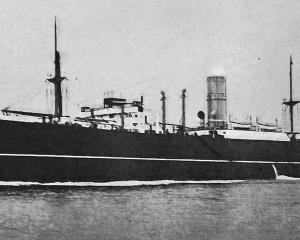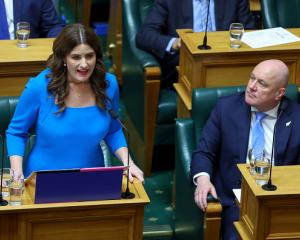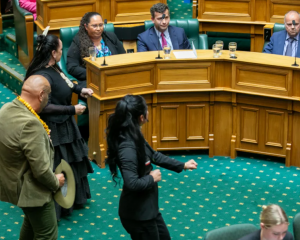The initial stage of the revamped Dunedin bus system is off to a bumpy start.
First from the depot were the southern routes. The rest of the city is to follow over the next year or so.
The idea behind the changes is, in the long term, to encourage faster and more efficient services, which will attract more users. This will be built around a central city hub, perhaps in Great King St, and ''super stops'' at Green Island, the University of Otago and Cargill's Corner.
Eventually, each super stop will include bus shelters and ''real time'' electronic displays updating when buses are due to arrive.
There will also be a system of free transfers so passengers could come into a super stop or the hub and then catch another bus in another direction without extra cost.
The Otago Regional Council, which oversees the buses, decided the best way to introduce the changes was in stages, and the chance arose to begin with the company Go Bus Transport.
A total of 238 extra services are being provided: 130 to Mosgiel, 40 to Brighton and 68 to Abbotsford.
All well and good, and Mosgiel and Green Island services are better, especially because the buses scoot down the motorway instead of puttering through Caversham. The standard time from Green Island to town has, in fact, been cut by about five minutes to 17.
Under the new system, passengers from Brighton and Abbotsford travel by bus to Green Island and then change to the express Mosgiel service.
Unfortunately, delays in a new ticketing system meant an ad hoc arrangement had to be put in place so these users did not have the cost and hassle of buying two tickets. At least this difficulty was anticipated, and temporary measures put in place.
What the council, however, failed to realise was the number of bus users from the south who get off in Caversham and South Dunedin and who now face the extra trouble and cost of travelling all the way into town and then having to buy another ticket and wait for another bus to get to their destination.
Given The Warehouse (its largest city shop) and Pak'nSave are both in South Dunedin, the council has copped some legitimate criticism on this score. It now appears to be trying to negotiate a second interim ticketing arrangement so these passengers are not out of pocket.
It is relatively easy to carry on with older, familiar ways. Change, though, inevitably prompts complaints, even if winners might outnumber losers.
The new bus ''upgrade'' is bold and there will be those who find buses stops are further from their homes. Others, and this has already occurred, will require two bus trips rather than one.
Many others, though, will benefit from faster and more direct buses because the new system is built on the principle of direct routes.
Dunedin in relatively small, and parking is easy and cheap. It is thus difficult to run a well patronised bus service.
Buses, nevertheless, remain a crucial option for travelling in and around the city. And should the cost of motoring rise substantially, they will become even more important.
Revamping bus services is not without costs. Passengers are expected to cover 50% of the expenditure, although this is being allowed to temporarily slip to 40% as the new system beds in.
The New Zealand Transport Agency meets about 25%, and about 25% is paid for by ratepayers through the regional council transport rate, which is calculated on a property's capital value.
This has been rising steadily and the increase is 2% for the 2015 16 years. Projected increases for the two years after that are 4% and 6%. Most of the large items are being paid for through the NZTA and the transport reserves the regional council has built up.
Expect more hiccups as the bus plan is rolled out. In the meantime, short term fixes will be required as long term benefits and improved public transport are sought. For the sake of Dunedin, it must be hoped these are achieved.











